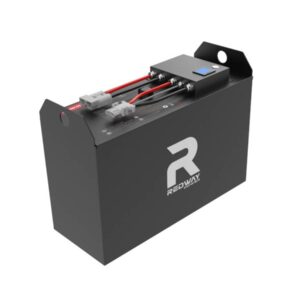How full should a forklift battery be?
Forklift batteries should generally be charged to 100% capacity, but with critical caveats based on battery chemistry and usage patterns. For lead-acid batteries, avoid discharging below 20% before recharging to prevent sulfation damage. Lithium-ion variants tolerate deeper discharges (down to 10-15%) but achieve maximum lifespan when kept between 20-80% state of charge. Always follow manufacturer guidelines for voltage cutoffs—lead-acid typically terminates at 2.4V/cell (14.4V for 12V units), while lithium systems use BMS-controlled balancing at 3.6-3.8V/cell. Overcharging beyond these thresholds accelerates degradation and risks thermal events.
Forklift Battery Maintenance Checklist Essentials
How does battery chemistry affect optimal charge levels?
Lead-acid batteries require full 100% charges weekly to prevent stratification but benefit from partial daily top-ups. Lithium variants like LiFePO4 thrive with partial cycles—maintaining 80% charge reduces electrolyte stress. Pro Tip: Use automated chargers with chemistry-specific profiles to avoid manual errors.

Lead-acid batteries utilize liquid electrolytes that stratify during partial charging, requiring periodic equalization charges at 15.5V for 12V units. Conversely, lithium batteries employ solid-state electrolytes immune to stratification but sensitive to voltage spikes. For example, a lithium forklift pack charged to 100% daily loses 30% more capacity over 5 years than one kept at 80%. Transitionally, operators must adapt charging strategies: lead-acid systems demand full charges for longevity, while lithium benefits from restrained charging. Key metrics:
| Chemistry | Ideal Charge Range | Weekly Full Charge Required? |
|---|---|---|
| Lead-Acid | 20-100% | Yes |
| LiFePO4 | 20-80% | No |
What voltage thresholds dictate full charge status?
Voltage cutoffs vary by chemistry: lead-acid reaches 2.4-2.45V/cell (14.6V for 12V) when fully charged, while NMC lithium hits 4.2V/cell. Temperature compensation matters—batteries at 35°C need 0.3V/cell lower termination than those at 20°C.
Chargers must dynamically adjust voltage based on real-time temperature readings. A 48V lead-acid system (24 cells) at 25°C terminates at 57.6V, but the same battery at 40°C stops at 56.4V to prevent gassing. Practically speaking, using fixed-voltage chargers in fluctuating environments accelerates water loss in lead-acid units by up to 40%. Pro Tip: Install temperature sensors on battery racks—modern IoT-enabled BMS systems automatically adjust charging parameters, maintaining optimal voltages within ±0.5% accuracy.
Battery Expert Insight
FAQs
Can I leave my forklift battery charging overnight?
For lithium: Yes, if using smart chargers with auto-shutdown. Lead-acid requires supervision—over 12 hours at float charge corrodes plates, reducing capacity by 2%/month.
Does partial charging harm lead-acid batteries?
Yes, if not followed by weekly full charges. Partial cycles cause stratification, requiring equalization charges at 15% higher voltage for 2-3 hours monthly.
